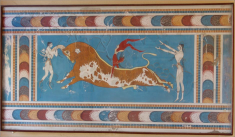Speaker
Description
The study of low-energy antinucleons interactions with nuclei are of great interest for many branches of physics. In particular, information on nuclear elastic scattering and annihilation can give some clues to answer open questions like antimatter-matter asymmetry in the Universe and provide useful information for quark and nuclear interactions models.
Moreover, the determination of scattering length of antineutrons is useful for the realization of experiments to search neutron-antineutron oscillations, a hypotetical phenomenon of great importance in the particle physics and cosmology scenario. This quantity can be deduced by antinucleon cross sections data with nuclei.
Another intriguing question regards the annihilation cross-section of antiprotons and antineutrons with nuclei, which seem to be very similar at low-energies. This behaviour is counter-intuitive and the mechanism responsible of it still unknown, and therefore more precise study of annihilation models for antinucleons is required.
In this presentation, recent experimental and theoretical results on antinucleon cross-section at low energies are considered.
New calculations with partial wave method and using a Woods-Saxon optical potential for annihilation and nuclear elastic cross-sections are presented. The study concerns the momentum region from 1 to 100 MeV/c. The behaviour of the mentioned processes and the different parital waves contributions are discussed.
Details
Migliorati Stefano, PhD Student, Università degli Studi di Brescia, Italy.
| Is this abstract from experiment? | No |
|---|---|
| Name of experiment and experimental site | N/A |
| Is the speaker for that presentation defined? | Yes |
| Internet talk | Yes |
